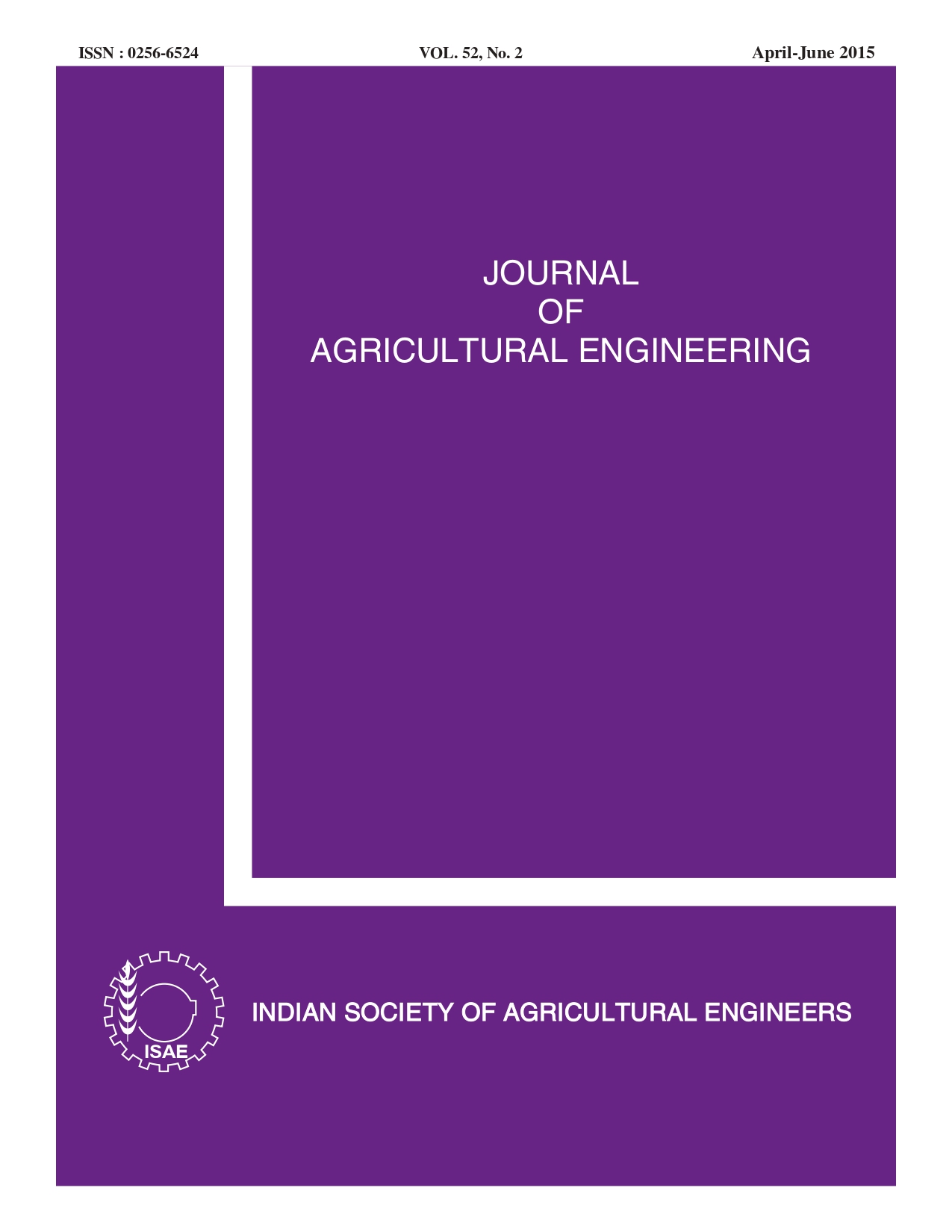Optimization of Extrusion Process for Preparation of Ready-to-Eat Product from Maize-Rice-Anola
DOI:
https://doi.org/10.52151/jae2015522.1575Keywords:
Bulk density, moisture content, expansion ratio, hardness, colour, extrusionAbstract
A blend of maize flour, rice flour and Anola in the ratio 80:10:10 was used as the ingredients for extrusion that would provide a vitamin C enriched ready-to-eat food product. Central composite design was used to evaluate the effects of independent variables, namely, barrel temperature (383-4030 K), screw speed (300-400 rpm) and feed moisture content (22-28.2% d.b) on product responses (bulk density, hardness, colour, expansion ratio and vitamin C). Sensory analysis was carried out using the 9-point hedonic scale for selected extruded product for colour, texture (hardness) and overall acceptability. The regression model developed was significant with R2 greater than 0.78. Barrel temperature and screw speed significantly influenced (P < 0.10) the expansion ratio, bulk density, and vitamin C. The barrel temperature and moisture content for colour and hardness of the product were significantly different (P< 0.05). On the basis of organoleptic evaluation, the product extruded at 3930 K barrel temperature, 350 rpm screw speed and 25% (d.b) feed moisture content was of the most acceptable quality.
References
Altan A; McCarthy K L; Maskan M. 2008. Twin-screw extrusion of barley–grape pomace blends: Extrudate characteristics and determination of optimum processing conditions. J. Food Eng., 89, 24–32.
AOAC. 1990. Official methods of analysis of AOAC. Association of Official Chemists, Washington D.C, Vol. II.
Chauhan G S; Verma N S; Bains G S. 2003. Effect of extrusion processing on the nutritional quality of protein in rice-legume blends. Mol. Nutr. Res., 32(1), 43 – 47.
Ding Q B; Ainsworth P; Tucker G; Marson H. 2005. The effect of extrusion conditions on the physicochemical properties and sensory characteristics of rice-based expanded snacks. J. Food Eng., 66, 283–289.
Ding Q B; Ainsworth P; Plunkett A; Tucker G; Marson H. 2006. The effect of extrusion conditions on the functional and physical properties of wheat-based expanded snacks. J. Food Eng.,73(2),142-148.
Gaosong J; Vasanthan T. 2002. The effect of extrusioncooking on the primary structure and water solubility of b-glucans from regular and waxy barley. Cereal Chem., 77, 396–400.
Gogoi B K; Yam K L. 1994. Relationships between residence time and process variables in a co-rotating twinscrew extruder. J. Food Eng., 21,177-196.
Harper J M. 1979. Food extrusion. Crit. Rev. Food Sci. Nutr., 11(2),155-215.
Harper J M. 1981. Extrusion of Foods –1. Boca Raton, FL: CRC Press, 120-129.
Ibanoglu S; Ainsworth P; Ozer E A; Plunkett A. 2006. Physical and sensory evaluation of a nutritionally balanced gluten-free extruded snack. J. Food Eng.,75(4), 469-472.
Ilo S; Berghofer E. 1999. Kinetics of colour changes during extrusion cooking of maize grits. J. Food Eng., 39, 73-80.
Jha S K; Suresh Prasad. 2003. Studies on extrusion cooking of rice and mung blend with salt and sugar. J. Food Sci. Technol., 40(3), 257-261.
Moscicki Leszek. 2011. Extrusion-Cooking Techniques: Applications, Theory and Sustainability. WILEY-VCH Verlag GmbH & Co., KGaA, Weinheim, ISBN: 978-3-527-32888-8.
Meng X; Threinen D; Hansen M; DriedgerD. 2009. Effects of extrusion conditions on system parameters and physical properties of a chickpea flour-based snack. Food Res. Int., 43(2), 650-658.
Montgomery D C.2001.Design and Analysis of Experiments. New York Wiley, 416-419.
Nath; Singh I S; Kumar S; Pandey A K. 1992. Effect of post harvest treatments on shelf life of anola fruit. Programme Hort., 24,79-82.
NIN. 2011. Dietary Guidelines for Indian- A Manual. National Institute of Nutrition, Hyderabad, 90.
Obatolu V A; Skonberg D I; Camire M E; Dougherty M P. 2005. Effect of moisture content and screw speed on the physical chemical properties of an extruded crab-based snack. Int. J. Food Sci. Technol., 11(2), 121–127.
Roonay J W; Serna-Saldivar S O. 1987. Food uses of whole corn and dry-milled fractions. In: Chemistry and Technology, American Association of Cereal Chemists, St Paul, 399-427.
Semasaka Carine; Xiangzhen Kong; Yufei Hua. 2010. Optimization of extrusion on blend flour composed of corn, millet and soybean. Pakistan J. Nutr., 9 (3), 291-297.
Singh S; Singh A K; Josh H K. 1993.Standardization of maturity indices in Indian gooseberry under semi arid conditions of Gujarat. Ind. J. Agric. Sci., 76, 591-595.
Sun Y; Muthukumarappan K. 2002. Changes in functionality of soy-based extrudates during single-screw extrusion processing. Int. J. Food Prop., 5(2),379-389.














